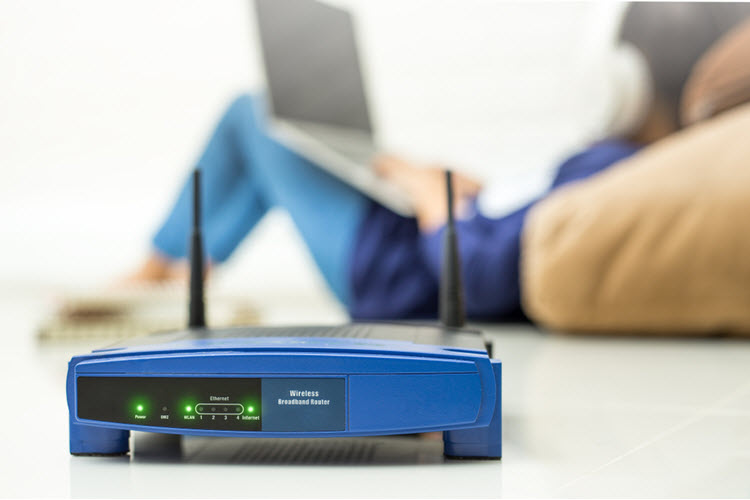
If your Internet sometimes slows to a crawl, if you’re noticing shadows of strange devices in Google Chrome or Safari, it just may be that one of your neighbors is piggybacking on your Wi-Fi. If they’re watching a movie on Netflix or playing Call of Duty with someone in another state, they’re using up what little bandwidth you have. The bottom line is this: you don’t want freeloaders on your network. Because once they’re on your network, they have free reign over every computer using it. That means they can access your private files, infect your devices with malware and maybe even rip off your passwords. So how can you see if and who is “borrowing” your network? Here are some suggestions.
Check Your Wireless Router Lights
Most wireless routers have lights that display Internet connectivity, your hardwired network connections, and wireless activity. A simple and direct method to see if anyone is using your network is to switch off all wireless devices and check if the wireless light on your router is still blinking. Keep in mind that you’ll have to shut down all your other Wi-Fi devices—TV, smartphone, X-Box, etc.). This rudimentary method will tell you if your neighbor is using your Wi-Fi, but it won’t tell you which neighbor is doing it.
Check the Device List on Your Router
Use your router’s administrative console to monitor your network’s activity and modify your security settings. Go to your router’s IP address and log in to your console. On Windows, go to a command prompt (press Win+R then type cmd) and then type ipconfig in the window. Locate the “Default Gateway” IP address. If you have a Mac, open the Network Preference window and get the IP address listed next to “Router.” Once you have the IP address, enter it into a browser window and log in to your router. You should see the login information—a mix of “admin” and “password” or blank fields. After you’ve entered your router, look for your connected devices—sometimes called “Attached Devices” or “My Network” or even “Device List.” Here you’ll find a list of IP addresses, MAC addresses, and device names that you can compare to your gear to find any leaching users.
Modify Security Settings to “Block and Boot”
If you find an unauthorized device, modify your security settings to block access to your Wi-Fi network from unauthorized users and boot off those who are currently leaching off your network. The IP addresses and MAC addresses alone won’t really help you identify the perpetrators themselves, though, if that’s what you’re looking for. If you want more information about where these moochers are, you can also try the software tool below.
Deploy Network Monitoring Software
If you want a more complete rundown on your Wi-Fi leaches, you can deploy network auditing tools like MoocherHunter. Used by law enforcement groups in Asia to track Wi-Fi moochers, MoocherHunter can map-find the wireless hacker based on the traffic they send across the network. You ‘ll need to “burn” the software to a CD then use it to boot your computer. Using your laptop and your wireless card’s directional antenna, you’ll be able to triangulate the location of the Wi-Fi moocher.